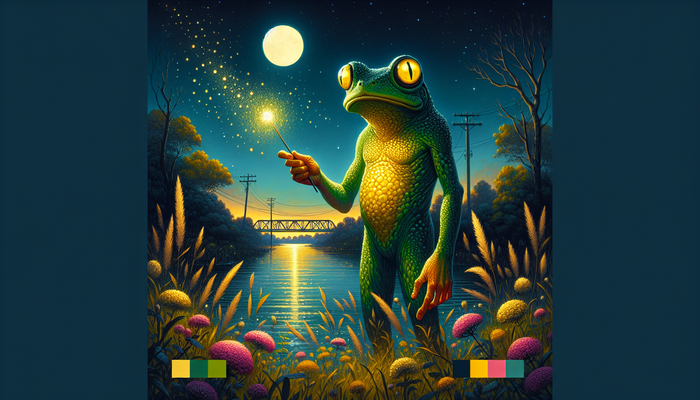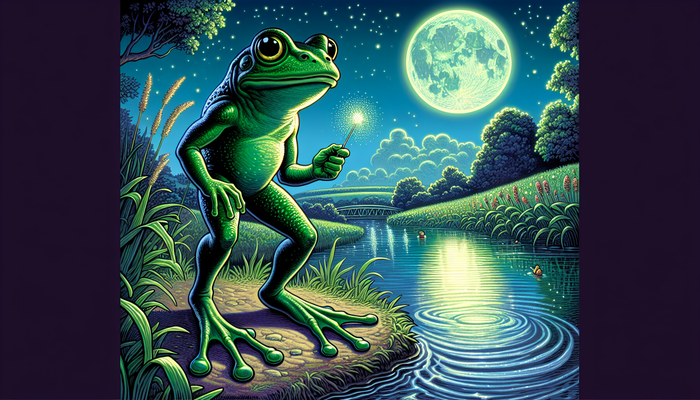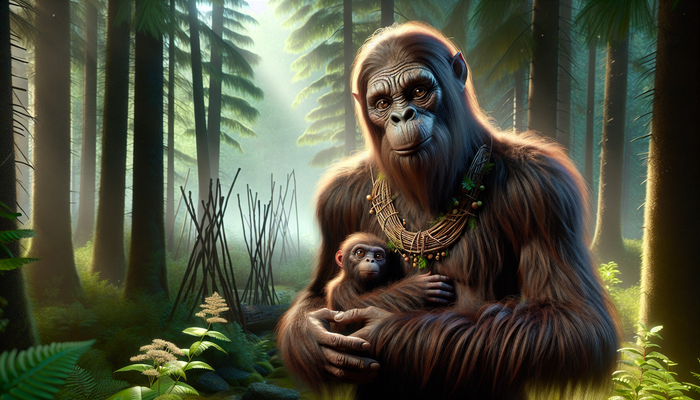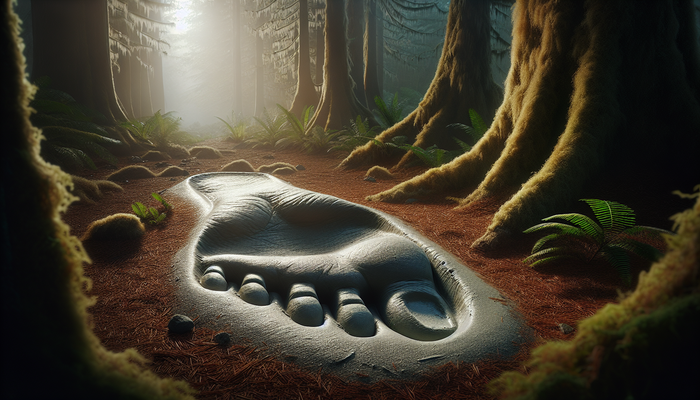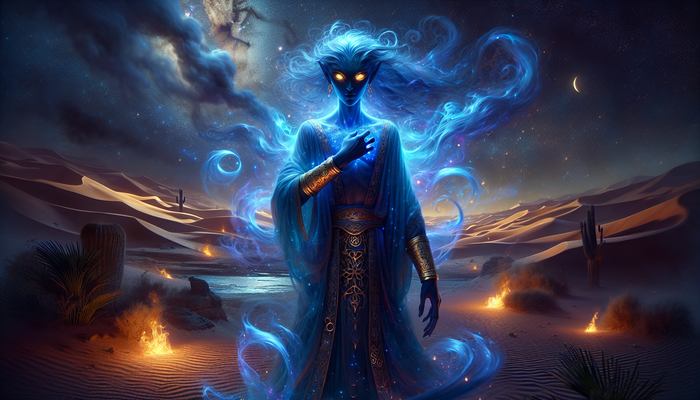Monster of Lake Tota: Colombia's Mythic Serpent of the Andes
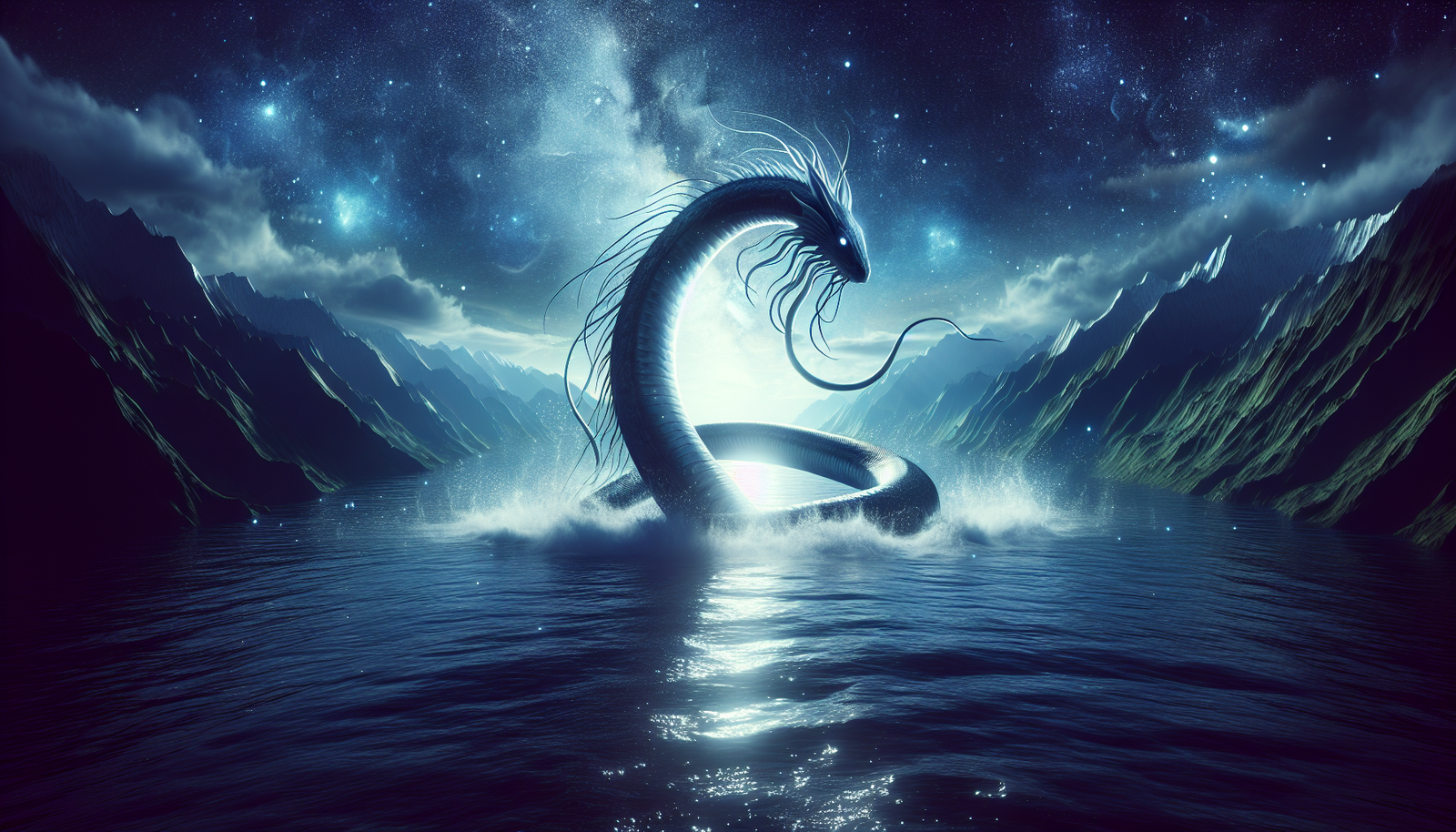
By James Roberts, Cryptozoologist
There's something about cryptozoological legends that ignites the imagination and sends a shiver down the spine. From the misty lochs of Scotland to the dense forests of North America, tales of mysterious creatures have captivated people for centuries. But there's one legend that stands out for its sheer grandeur and mythic power - the Monster of Lake Tota, Colombia's very own serpent of the Andes.
Nestled high in the mountains of the Boyacá department, Lake Tota is a place of breathtaking beauty and eerie enchantment. At over 10,000 feet above sea level, it's the largest lake in Colombia, a vast expanse of crystalline water fringed by rolling green hills and rocky crags. But beneath its placid surface, something ancient and fearsome is said to lurk.
For as long as anyone can remember, the indigenous Muisca people have spoken of a giant serpent spirit that dwells in the depths of Lake Tota. They call it Busiraco, the demon snake, and believe it holds sway over the very forces of nature. Spanish conquistadors and colonial chroniclers whispered of a devilish beast "bigger than a whale" that guarded the lake's secrets. And modern cryptozoologists speculate about what manner of undiscovered creature might really be swimming in those enigmatic waters.
In this article, we'll dive deep into the murky history and cultural significance of the Monster of Lake Tota. We'll trace its evolution from pre-Columbian myth to colonial legend to contemporary icon, and explore what this enduring tale reveals about the human relationship to the mysteries of the natural world. Strap in, because we're about to embark on a journey into the very heart of the unknown, where the lines between folklore and reality blur and strange wonders await the intrepid explorer. The Monster of Lake Tota may be elusive, but the spell it casts is undeniable.
The Muisca Myth: Busiraco the Serpent and the Lake's Creation
To understand the Monster of Lake Tota, we first have to go back to the people who knew this land long before the Spanish arrived - the Muisca. One of the most advanced indigenous civilizations in pre-Columbian Colombia, the Muisca built a sophisticated society around the Altiplano Cundiboyacense, the high plateau where Bogotá and Lake Tota now sit.
For the Muisca, the lake wasn't just a pretty landmark - it was a sacred site imbued with deep spiritual significance. They believed it was the abode of powerful deities who controlled the weather, the harvest, and the very balance of the cosmos. Chief among these was Busiraco, the giant serpent spirit who lived in a cave at the bottom of the dry lakebed.
In Muisca lore, Busiraco was no benevolent guardian - he was a fearsome demon associated with the underworld, a bringer of chaos and destruction. With his massive, scaly body and glowing eyes, Busiraco terrorized the Muisca, demanding blood sacrifices and devouring any who dared disturb his subterranean lair.
But the Muisca had a hero in their midst - the great warrior Siramena. Armed with a golden disc blessed by the sun god Sué, Siramena descended into Busiraco's cave and engaged the monster in an epic battle. Though the serpent fought fiercely, Siramena managed to wound it grievously before emerging victorious.
Yet Busiraco's reign of terror wasn't quite over. As the demon snake lay dying, its death throes shook the earth and cracked open the floor of the cave. Water began to gush forth from some unknown source, flooding the great pit. It was then that the Muisca priest Moneta stepped forward, shedding emerald tears that sparkled with divine power. As Moneta wept, his tears fell into the churning water, drowning Busiraco once and for all and filling the crater to the brim.
And so, according to Muisca myth, Lake Tota was born from the watery grave of the vanquished monster. Busiraco's evil had been overcome, the world had been set right, and a new sacred geography had taken shape. For the Muisca, the lake became the ultimate symbol of the triumph of good over evil, of cosmic order restored after a harrowing brush with primordial chaos.
But Busiraco's ghost would linger in the depths, morphing over the centuries from indigenous demon to colonial devil to modern-day cryptid. The Monster of Lake Tota had been unleashed, and its story was only just beginning.
Colonial Chronicles: The Monster Morphs into a Devilish Beast
When the Spanish conquistadors arrived in the Muisca territories in the 16th century, they brought with them their Catholic faith and a penchant for the fantastical. In their eyes, the New World was a land of marvels and horrors, where pagan gods and demonic entities lurked in every shadow. So it's no surprise that when they heard tell of a monstrous serpent lurking in Lake Tota, they were quick to interpret it through their own religious and cultural lens.
One of the first Spanish accounts of the creature comes from none other than Gonzalo Jiménez de Quesada, the conquistador who led the first European expedition into the Muisca heartland. According to Quesada, the monster of Lake Tota was no mere snake, but a devilish abomination "with a black head like an ox" and a body "larger than a whale." In Quesada's telling, the beast was a malevolent guardian of the lake, a demonic entity that the Muisca both feared and revered.
Quesada's description set the tone for subsequent colonial chronicles, which cast the monster as a diabolical figure straight out of a medieval bestiary. In 1652, a local woman named Doña Andrea Vargas claimed to have spotted the creature with her own eyes, confirming its terrifying appearance. And in 1676, the priest and historian Lucas Fernández de Piedrahita devoted a passage in his "General History of the Conquest of the New Kingdom of Granada" to the "monstrous fish" that haunted Lake Tota, describing it as a "devilish" creature that the Muisca "affirmed was the devil."
By the time the geographer Antonio de Alcedo compiled his "Diccionario Geográfico-Histórico de las Indias Occidentales ó América" in 1788, the Monster of Lake Tota had become a fixture of colonial lore. Alcedo matter-of-factly noted the existence of a "large fish" in the lake, as if it were just another natural wonder to be cataloged alongside the mountains and rivers of the region.
But the monster wasn't just a curiosity - it was also a source of genuine fear and awe. Colonial accounts describe Lake Tota as a place of eerie, almost supernatural dread, where the water itself seemed to pulse with malevolent energy. Locals whispered of a demonic creature that lurked in the depths, occasionally surfacing just long enough to terrify unwary fishermen or travelers. Some even claimed that the monster's very presence made the lake unnavigable, as if it were a jealous god guarding its watery domain from human intrusion.
Looking back from the vantage point of the 21st century, it's easy to see how the Monster of Lake Tota served as a kind of cultural Rorschach test for the colonial imagination. On one level, it gave voice to the very real sense of fear and wonder that the Spanish felt in the face of an alien landscape and an unfamiliar cosmology. By recasting the Muisca's serpent spirit as a Christian demon, the colonizers were able to impose their own religious framework onto the New World, taming the unknown and asserting their dominance over the indigenous population.
At the same time, the monster also embodied the deep ambivalence that many Spaniards felt towards the societies they had conquered. The Muisca were a sophisticated civilization with a complex mythology and a rich material culture, and their beliefs and practices both fascinated and repelled the Spanish. By imagining the Monster of Lake Tota as a diabolical Other, the colonizers were able to project their own anxieties and fantasies onto the Muisca, exoticizing and demonizing them in equal measure.
In the end, the colonial-era Monster of Lake Tota was a creature of the contact zone, a liminal figure that blurred the boundaries between indigenous and European, pagan and Christian, natural and supernatural. It was a symbol of the strange, often violent alchemy that occurred when two worldviews collided and a new society was forged in the crucible of conquest. And like so many aspects of the colonial experience, it left a legacy that would endure long after the Spanish Empire had faded into history.
19th Century Accounts: Explorers, Writers and the Enduring Legend
As Colombia emerged from the shadow of Spanish rule in the 19th century, the legend of the Monster of Lake Tota took on new dimensions. No longer just a religious symbol or a colonial curiosity, the creature became a subject of scientific speculation, literary imagination, and nationalist pride. Explorers, writers, and folklorists all grappled with the enduring mystery of the lake and its elusive inhabitant, each adding their own twist to the ever-evolving tale.
One of the most evocative accounts from this period comes from the French explorer Gaspard Théodore Mollien, who visited the Lake Tota region in 1823. In his travelogue, Mollien paints a vivid picture of the lake as a place of "horrific wonders," where the water is "always agitated by the wind blowing from Toxillo" and the shoreline is littered with "a slimy substance, oval, and filled with unpleasant water." But it's his description of the monster itself that really captures the imagination:
"According to the people in the region, the lake is not navigable; the evil character inhabits its depths in dwellings, they say, one can see the gateways if they stay away from the shores and head toward the middle of the lake, occasionally out of the abyss a monstrous fish can be seen only briefly."
Mollien's account reads like something out of a Gothic novel, all eerie atmospherics and tantalizing glimpses of the uncanny. He presents the Monster of Lake Tota as a kind of spectral presence, an "evil character" that haunts the depths and surfaces just long enough to tantalize and terrify. In Mollien's telling, the creature is almost a metaphor for the sublime power and mystery of the natural world itself, a reminder of how little humans really know about the forces that shape our environment.
But not everyone was quite so credulous. In 1852, the Colombian writer and politician Manuel Ancízar penned a somewhat more skeptical take on the Monster of Lake Tota in his book "The Pilgrimage Alpha." Ancízar describes the creature as a "freshwater devil" and notes that "no one has the courage to explore the lake" due to the "spooky stories" surrounding it. But he also observes that a few bold souls have begun to venture out onto the water in rafts and canoes, "dispelling the spooky stories" and claiming the lake for human use.
Ancízar's account reflects the growing influence of Enlightenment rationalism in 19th-century Latin America. As a man of letters and a champion of modernization, Ancízar was inclined to view the Monster of Lake Tota as a superstitious relic of a bygone age, a "spooky story" that could be dispelled by the light of reason and progress. At the same time, he couldn't help but be fascinated by the legend and its hold on the popular imagination, a testament to the enduring power of myth in even the most modern of societies.
Perhaps the most comprehensive treatment of the Monster of Lake Tota from this period comes from the botanist and folklorist José Jerónimo Triana. In his 1880 compilation "Myths, legends, traditions and folklore of Lake Tota," Triana presents a wide-ranging survey of the beliefs and practices surrounding the lake and its resident monster. He notes that the creature is still very much alive in local lore, with many residents of the nearby town of Cuitiva claiming that "a black monster lived in the enchanted waters of the lagoon."
But Triana also situates the monster within a broader context of indigenous and Catholic belief. He observes that the Muisca people saw the lake as the abode of "a sublime divinity," while the Spanish colonizers recast the creature as a "devilish" figure. In Triana's telling, the Monster of Lake Tota emerges as a kind of hybrid entity, a product of the complex religious and cultural syncretism that characterized post-colonial Colombia.
Triana's work is a reminder that the Monster of Lake Tota was never just a simple folk tale or a straightforward natural history. Instead, it was a deeply resonant symbol that spoke to the hopes, fears, and contradictions of Colombian society as it grappled with the legacy of colonialism and the challenges of modernity. In the creature's shifting identity - from indigenous spirit to Catholic devil to Romantic sublime - we can see the larger forces that were reshaping Latin America in the 19th century, from the struggle between tradition and progress to the search for a new national identity.
As the 20th century dawned, the Monster of Lake Tota would take on yet another guise - that of a cryptozoological wonder, a tantalizing mystery that might just be solved by the tools of modern science. But even as the legend evolved, it never lost its essential power as a mirror for the human imagination, a blank screen onto which we could project our deepest desires and darkest fears. In the end, the monster's enduring appeal lay not in its physical reality, but in its ability to embody the ineffable, to give form to the things that lurk just beyond the edge of our understanding.
From Bigfoot to UFOs: Hangar 1 Publishing Has You Covered!
Explore Untold Stories: Venture into the world of UFOs, cryptids, Bigfoot, and beyond. Every story is a journey into the extraordinary.
Immersive Book Technology: Experience real videos, sights, and sounds within our books. Its not just reading; its an adventure.


